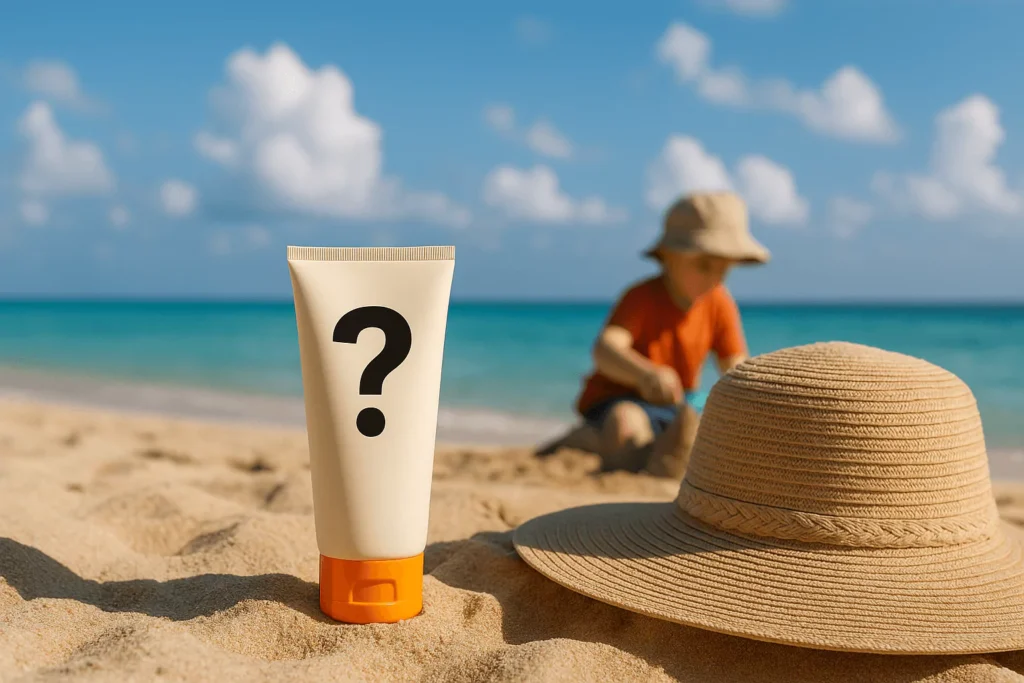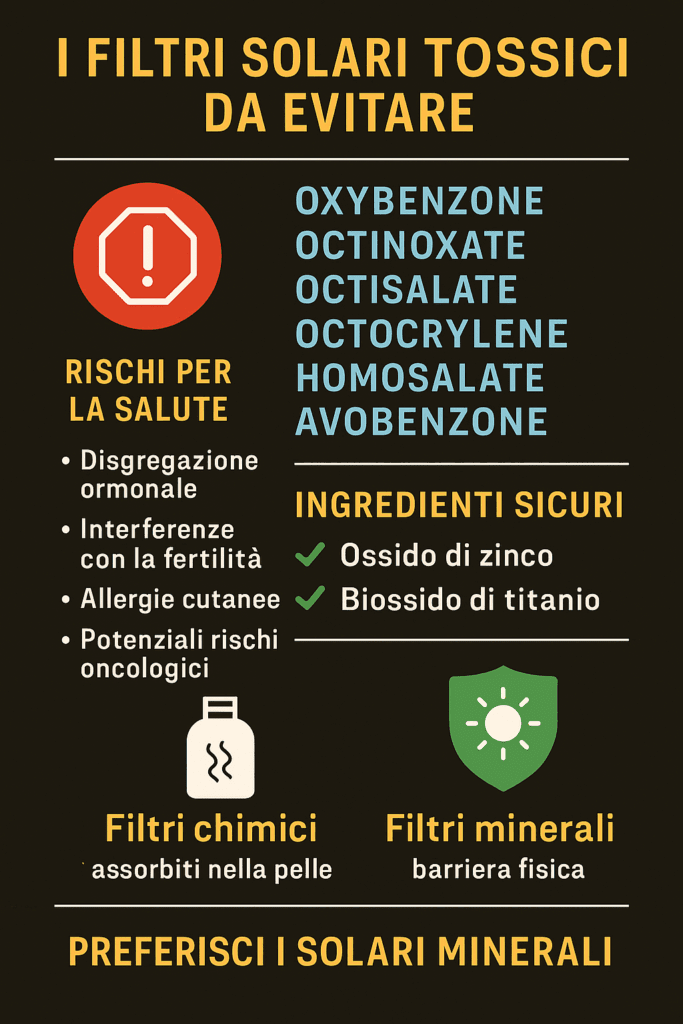
Toxic sunscreen ingredients to avoid and safe alternatives
Many people do not know that what we smear on the skin is absorbed into the bloodstream.
This also applies to the sunscreens, especially those formulated with chemical filters.
🌡️ Why is it important to know what's inside your solar?
Because many commonly used ingredients:
- They are absorbed into the body
- They interfere with the endocrine system
- They can persist in the blood even weeks after use
- They are linked to hormonal disorders, infertility, allergies, and possible cancer risks
❌ The 6 chemical sunscreens to avoid
Oxybenzone
🔬 Extremely absorbable.
🔴 Connected to:
- Allergic skin reactions
- Decreased testosterone in adolescent boys
- Increased risk of endometriosis and breast cancer
- Thyroid tumors in rats
Octinoxate
📈 Found in blood at levels 16 times the FDA limit.
Interferes with:
- Thyroid
- Androgenic hormones
- Progestin hormones
Octisalate
🤧 May cause skin allergies.
💉 Found in blood at 10 times FDA limits.
Octocrylene
🧬 Penetrates the skin up to 14 times beyond safe limits.
☠️ Toxic to corals and marine life (banned in some U.S. states).
Homosalate
⚠️ Recognized hormone disruptor.
The European Union recommends a limit of 1.4%, while the FDA allows up to 15%.
Avobenzone
📉 May cause allergies and interfere with male sex hormones.
❗ It is used for UVA protection, but needs equally problematic stabilizers.
🧬 Why are these substances so problematic?
These ingredients:
- Alter hormone balance
- Can interfere with fertility
- They reduce testosterone
- Compromise development at a young age
- They are associated with metabolic disorders and increased risk of endocrine disorders
🇺🇸 US vs. 🇪🇺 Europe: the differences
Sunscreens sold in the United States:
Sono mainly chemical
They block UVB rays (the ones that burn) well.
But they let through up to 3 times more UVA rays than European ones
UVA rays:
- They penetrate deeper
- They promote skin aging
- They suppress the immune system
- They are implicated in the development of skin cancers
Which sunscreen to choose?
💡 The safest choice: the mineral filters
🌿 The two main ingredients are:
- Zinc oxide (zinc oxide)
- Titanium dioxide (titanium dioxide)
✅ They are recognized as safe by the FDA and the European Commission.
✅ Do not interfere with hormones.
✅ They protect against UVA and UVB.
✅ They now exist in transparent, lightweight formulas with no white effect.

Which brand to choose?
To avoid mistakes, rely on products certified by EWG (Environmental Working Group), which monitors safety and toxicity of cosmetics.
📌 Check out the updated list here:
👉 EWG - The 255 best solar per leisure time
📌 CONCLUSION
Choosing a good sunscreen is not just a matter of aesthetics or protection from the sun's rays.
It is an act of care toward your hormonal system, metabolism, and long-term health.
💡 Prefer mineral, certified, transparent, non-toxic sunscreens.
And remember:
What you put on your skin goes into your body.
